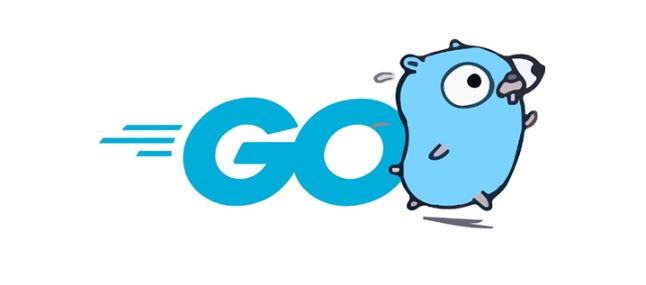Write a benchmark function starting with Benchmark and taking *testing.B as a parameter. 2. Place the benchmark in a test.go file and ensure the main logic runs inside a loop that iterates b.N times. 3. Run the benchmark using go test -bench=. to measure execution time. 4. Use go test -bench=. -benchmem to also track memory allocations. 5. Perform setup operations outside the benchmark loop and use b.ResetTimer() if needed to exclude setup time. 6. Avoid compiler optimizations by using the result via or b.ReportMetric. 7. Use b.Run to create sub-benchmarks for different inputs, enabling labeled and comparative results. 8. Ensure benchmarks are stable by avoiding external dependencies and running them multiple times with -count to verify consistency. The Go testing framework automatically adjusts b.N for statistically significant results and reports performance metrics per operation, completing the entire benchmarking process efficiently.

Writing a benchmark test in Go is straightforward and built into the testing package. You use it to measure the performance of your code—typically how fast a function runs and how much memory it allocates.

Use the Benchmark Prefix and *testing.B Parameter
To create a benchmark, define a function whose name starts with Benchmark, takes a pointer to testing.B, and lives in a _test.go file.
// math_test.go
package main
import "testing"
func BenchmarkAdd(b *testing.B) {
for i := 0; i < b.N; i {
Add(1, 2)
}
}Here, Add is the function you're testing. The loop runs b.N times, where b.N is automatically adjusted by the go test tool to get statistically significant results.

Run the Benchmark with go test -bench
Run your benchmark using:
go test -bench=.
This runs all benchmarks in the current package. Output looks like:

BenchmarkAdd-8 1000000000 0.300 ns/op
This means the Add function took about 0.3 nanoseconds per operation on average, using 8 CPU threads.
You can also combine it with -benchmem to see memory allocation:
go test -bench=. -benchmem
Output might include:
BenchmarkAdd-8 1000000000 0.300 ns/op 0 B/op 0 allocs/op
This shows no memory was allocated per operation.
Write Meaningful Benchmarks
Make sure your benchmark reflects real usage. For example, if you're benchmarking a function that processes a slice, avoid including setup time in the measured loop.
func BenchmarkFibonacci(b *testing.B) {
for i := 0; i < b.N; i {
Fibonacci(10)
}
}If setup is needed (e.g., large input), do it outside the loop:
func BenchmarkProcessData(b *testing.B) {
data := make([]int, 1000)
for i := range data {
data[i] = i
}
b.ResetTimer() // Optional: ignore setup time
for i := 0; i < b.N; i {
Process(data)
}
}Tips for Effective Benchmarking
- Avoid compiler optimizations that skip unused results. If your function returns a value you don’t use, assign it to
_or useb.ReportMetricif relevant. - Use sub-benchmarks with
b.Runto test multiple inputs:
func BenchmarkAddDifferentInputs(b *testing.B) {
inputs := []int{1, 2, 5, 10}
for _, v := range inputs {
b.Run(fmt.Sprintf("Input_%d", v), func(b *testing.B) {
for i := 0; i < b.N; i {
Add(v, v 1)
}
})
}
}This gives you labeled results:
BenchmarkAddDifferentInputs/Input_1 BenchmarkAddDifferentInputs/Input_2 ...
- Keep benchmarks stable: Avoid network, disk I/O, or external dependencies.
- Run multiple times to check for consistency. Use
-count:
go test -bench=. -count=3
Basically, write a function with the right signature, loop b.N times, and run go test -bench. The tool does the rest.
The above is the detailed content of How do you write a benchmark test in Go?. For more information, please follow other related articles on the PHP Chinese website!

Hot AI Tools

Undress AI Tool
Undress images for free

Undresser.AI Undress
AI-powered app for creating realistic nude photos

AI Clothes Remover
Online AI tool for removing clothes from photos.

Clothoff.io
AI clothes remover

Video Face Swap
Swap faces in any video effortlessly with our completely free AI face swap tool!

Hot Article

Hot Tools

Notepad++7.3.1
Easy-to-use and free code editor

SublimeText3 Chinese version
Chinese version, very easy to use

Zend Studio 13.0.1
Powerful PHP integrated development environment

Dreamweaver CS6
Visual web development tools

SublimeText3 Mac version
God-level code editing software (SublimeText3)
 How does the switch statement work in Go?
Jul 30, 2025 am 05:11 AM
How does the switch statement work in Go?
Jul 30, 2025 am 05:11 AM
Go's switch statement will not be executed throughout the process by default and will automatically exit after matching the first condition. 1. Switch starts with a keyword and can carry one or no value; 2. Case matches from top to bottom in order, only the first match is run; 3. Multiple conditions can be listed by commas to match the same case; 4. There is no need to manually add break, but can be forced through; 5.default is used for unmatched cases, usually placed at the end.
 how to break from a nested loop in go
Jul 29, 2025 am 01:58 AM
how to break from a nested loop in go
Jul 29, 2025 am 01:58 AM
In Go, to break out of nested loops, you should use labeled break statements or return through functions; 1. Use labeled break: Place the tag before the outer loop, such as OuterLoop:for{...}, use breakOuterLoop in the inner loop to directly exit the outer loop; 2. Put the nested loop into the function, and return in advance when the conditions are met, thereby terminating all loops; 3. Avoid using flag variables or goto, the former is lengthy and easy to make mistakes, and the latter is not recommended; the correct way is that the tag must be before the loop rather than after it, which is the idiomatic way to break out of multi-layer loops in Go.
 Using the Context Package in Go for Cancellation and Timeouts
Jul 29, 2025 am 04:08 AM
Using the Context Package in Go for Cancellation and Timeouts
Jul 29, 2025 am 04:08 AM
Usecontexttopropagatecancellationanddeadlinesacrossgoroutines,enablingcooperativecancellationinHTTPservers,backgroundtasks,andchainedcalls.2.Withcontext.WithCancel(),createacancellablecontextandcallcancel()tosignaltermination,alwaysdeferringcancel()t
 Building Performant Go Clients for Third-Party APIs
Jul 30, 2025 am 01:09 AM
Building Performant Go Clients for Third-Party APIs
Jul 30, 2025 am 01:09 AM
Use a dedicated and reasonably configured HTTP client to set timeout and connection pools to improve performance and resource utilization; 2. Implement a retry mechanism with exponential backoff and jitter, only retry for 5xx, network errors and 429 status codes, and comply with Retry-After headers; 3. Use caches for static data such as user information (such as sync.Map or Redis), set reasonable TTL to avoid repeated requests; 4. Use semaphore or rate.Limiter to limit concurrency and request rates to prevent current limit or blocking; 5. Encapsulate the API as an interface to facilitate testing, mocking, and adding logs, tracking and other middleware; 6. Monitor request duration, error rate, status code and retry times through structured logs and indicators, combined with Op
 how to properly copy a slice in go
Jul 30, 2025 am 01:28 AM
how to properly copy a slice in go
Jul 30, 2025 am 01:28 AM
To correctly copy slices in Go, you must create a new underlying array instead of directly assigning values; 1. Use make and copy functions: dst:=make([]T,len(src));copy(dst,src); 2. Use append and nil slices: dst:=append([]T(nil),src...); both methods can realize element-level copying, avoid sharing the underlying array, and ensure that modifications do not affect each other. Direct assignment of dst=src will cause both to refer to the same array and are not real copying.
 How to use template.ParseFS with go embed?
Jul 30, 2025 am 12:35 AM
How to use template.ParseFS with go embed?
Jul 30, 2025 am 12:35 AM
Use the template.ParseFS and embed package to compile HTML templates into binary files. 1. Import the embed package and embed the template file into the embed.FS variable with //go:embedtemplates/.html; 2. Call template.Must(template.ParseFS(templateFS,"templates/.html")))) to parse all matching template files; 3. Render the specified in the HTTP processor through tmpl.ExecuteTemplate(w,"home.html", nil)
 Working with Time and Dates in Go
Jul 30, 2025 am 02:51 AM
Working with Time and Dates in Go
Jul 30, 2025 am 02:51 AM
Go uses time.Time structure to process dates and times, 1. Format and parse the reference time "2006-01-0215:04:05" corresponding to "MonJan215:04:05MST2006", 2. Use time.Date(year, month, day, hour, min, sec, nsec, loc) to create the date and specify the time zone such as time.UTC, 3. Time zone processing uses time.LoadLocation to load the position and use time.ParseInLocation to parse the time with time zone, 4. Time operation uses Add, AddDate and Sub methods to add and subtract and calculate the interval.
 What are runes in Go?
Jul 31, 2025 am 02:15 AM
What are runes in Go?
Jul 31, 2025 am 02:15 AM
AruneinGoisaUnicodecodepointrepresentedasanint32,usedtocorrectlyhandleinternationalcharacters;1.Userunesinsteadofbytestoavoidsplittingmulti-byteUnicodecharacters;2.Loopoverstringswithrangetogetrunes,notbytes;3.Convertastringto[]runetosafelymanipulate






